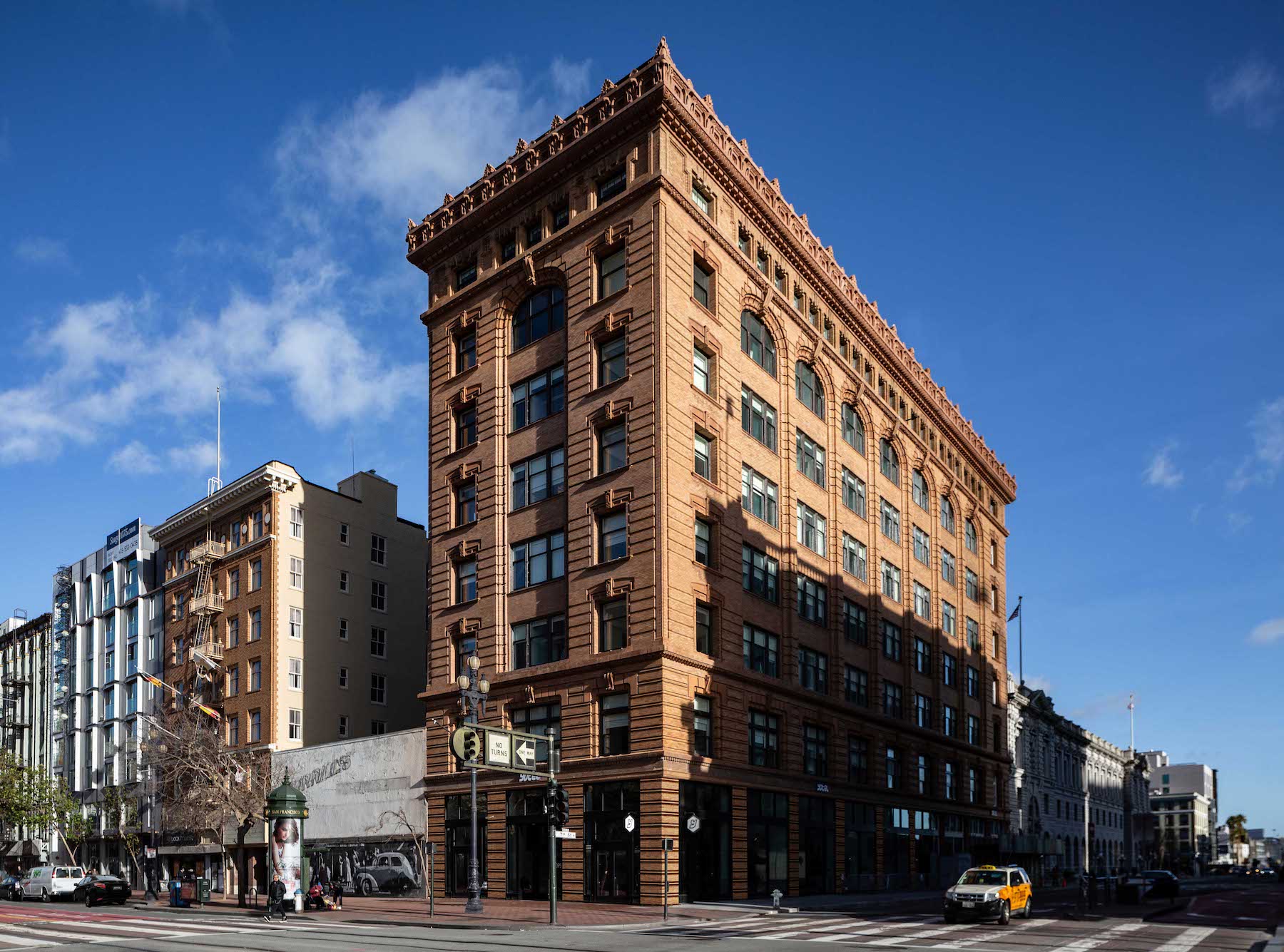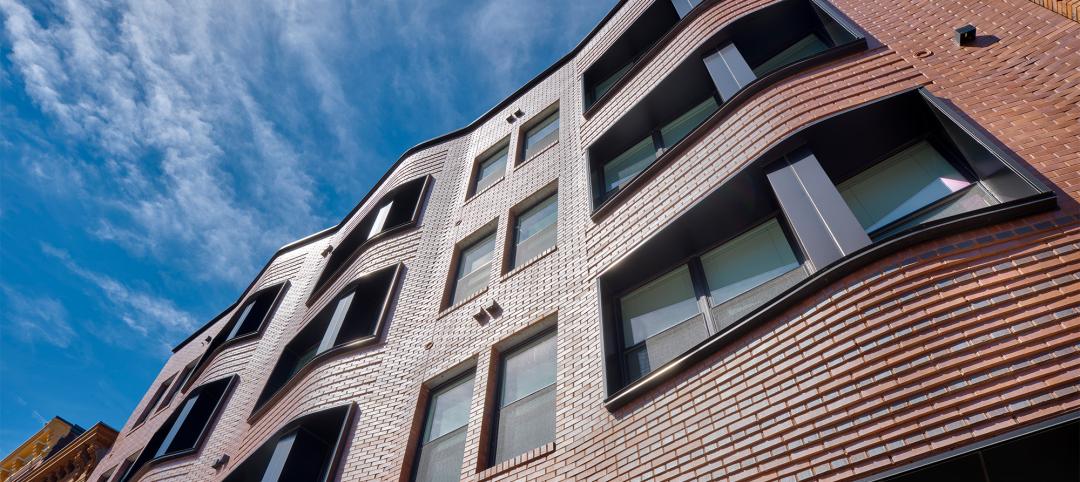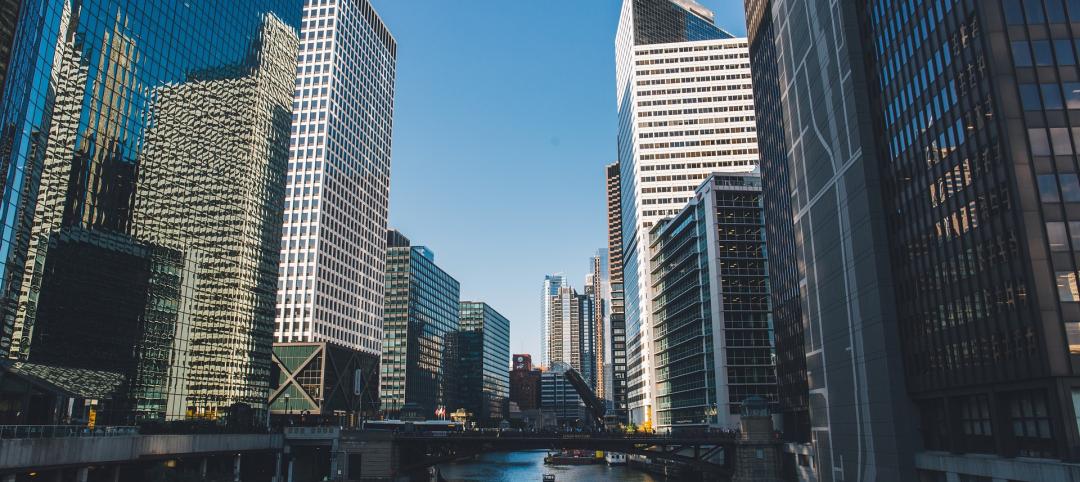Most nonresidential construction projects are delivered late. And then there’s 1095 Market Street in San Francisco, an office building-to-hotel conversion that was supposed to take 18 months to complete but, for a host of reasons—some COVID related, others architectural—was finally finished last spring, five years after the project was started.
“I would need three hours to explain why,” laughed Todd Pesavento, Project Executive with Skanska USA Building, the project’s general contractor that also provided design-build services for mechanical, electrical, fire protection, and historical elements. BD+C interviewed Pesavento last week with Jason Wright, Associate Designer and a Conservation and Preservation Specialist with Page & Turnbull, which handled most of the historic restoration of this 115-year-old building.
Pesavento explained that the building—which was also known as the Grant Building—had “numerous” structural and foundation issues whose installation took a year to redesign and implement. An exterior wood column had deteriorated to the point where it had to be replaced from the 8th floor to the roof six floors above. That replacement also required removing and replacing historic brick. There was also more lead paint in the building than expected that needed remediation.
BAR Architects, the project’s architect, had to rebuild the building’s ground-floor storefront and to recreate the building’s wood window system that is now sound- and weatherproof.
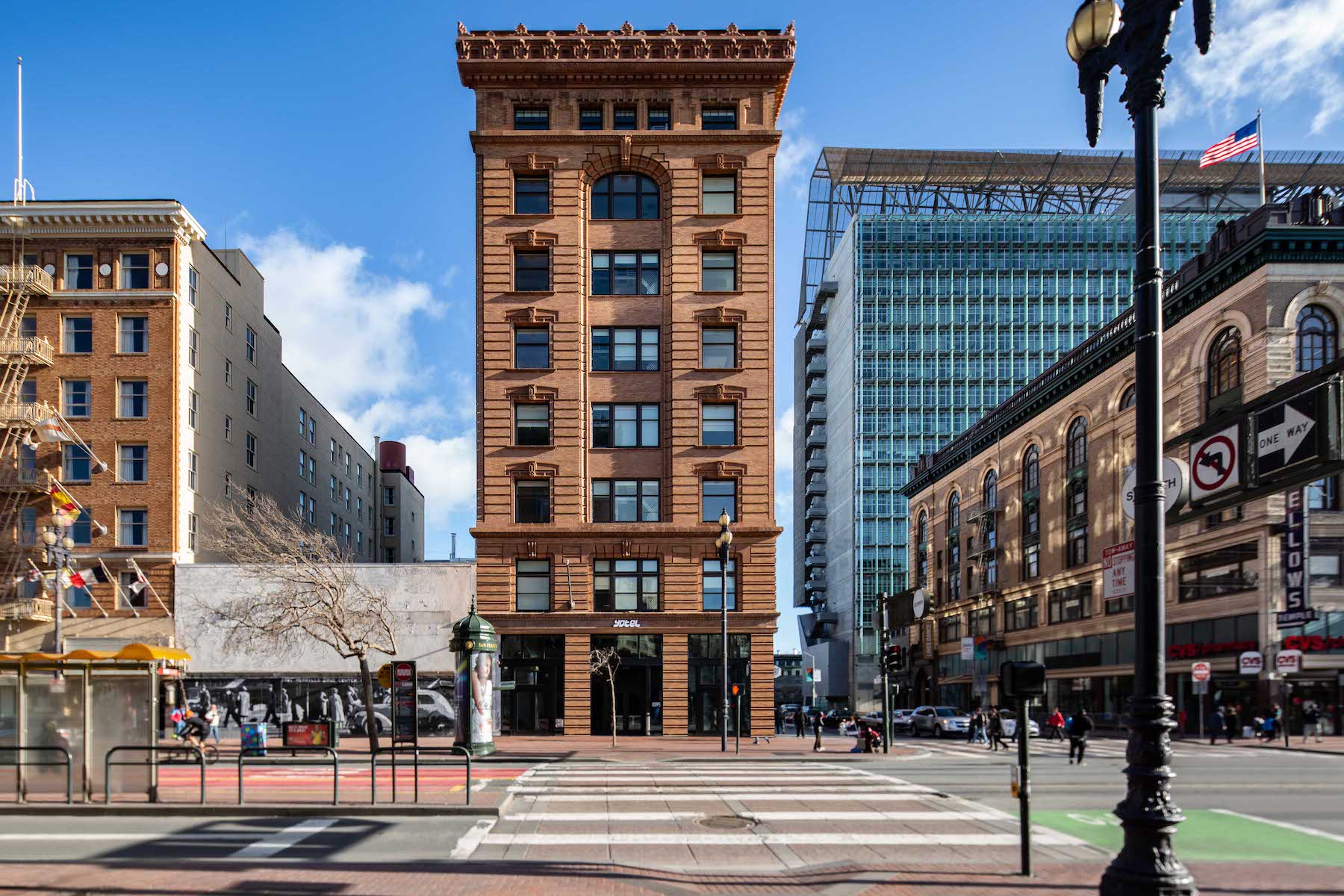
Pesavento noted that four of the building’s original terracotta pilasters were coated with several layers of paint that were removed. Those pilasters were used as models to recreate nine other pilasters from glass fiber-reinforced concrete (GFRC) material, each with seven components.
Wright added that the brick and terracotta in the middle of the building, with a lot of different shapes, had to be cleaned and, where necessary, repaired or replaced, which meant some arduous color matching.
REPLACING THE BUILDING’S DECORATIVE FLOURISH
One of the biggest parts of this historic restoration was reconstructing missing cornices, which Wright said had been cut off the building in the 1950s. Page & Turnbull never found the original drawings, but did locate high-res images of the building (with its cornices) in local and state libraries. Recreating the cornices required Skanska and its subs to work with 3D-printed models.
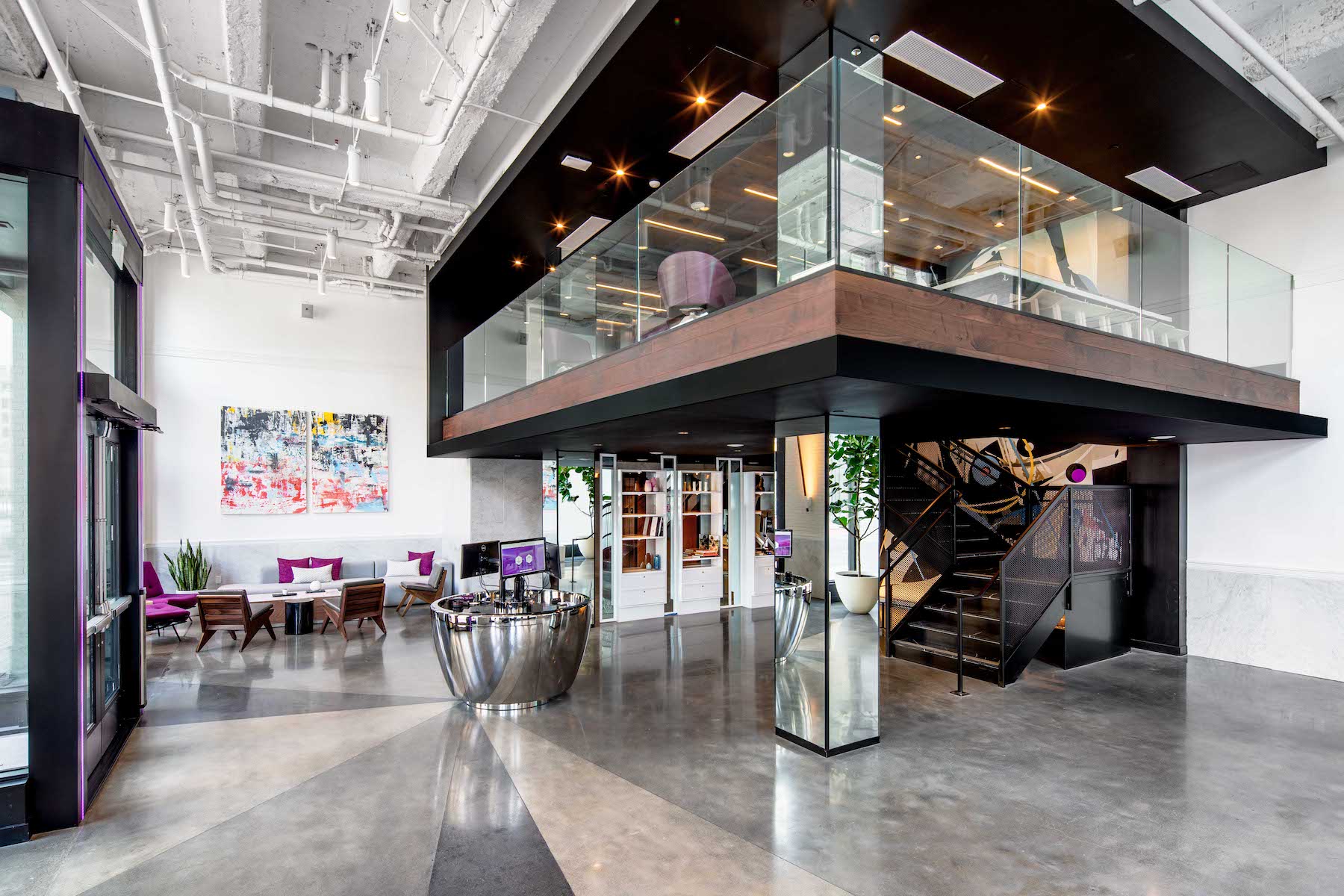
The finished product is now a 203-key Yotel micro hotel, that brand’s first micro in the western U.S. Features like self-check-in kiosks, loft-style sleeping layouts, smart televisions and public co-working and meeting space are geared toward the burgeoning neighborhood’s millennial travelers and professionals. A rooftop bar and ground-floor restaurant and bar are open to the public.
Pesavento said that Synapse Development Group, this project’s developer, was “very hands-on, and involved” during the design phase. The biggest challenge in this adaptive reuse was the mechanical system, because the bathrooms within most office buildings are in the middle of the building. For the hotel, all of the plumbing had to be rerouted. Pesavento added that the hotel was laid out to avoid the interior’s existing structures (such as columns), so the execution “needed a lot of field coordination.”
The converted building, which for all intents and purposes had been missing its bottom and crown, “is now timeless,” said Pesavento.

Related Stories
Multifamily Housing | May 16, 2023
Legislators aim to make office-to-housing conversions easier
Lawmakers around the country are looking for ways to spur conversions of office space to residential use.cSuch projects come with challenges such as inadequate plumbing, not enough exterior-facing windows, and footprints that don’t easily lend themselves to residential use. These conditions raise the cost for developers.
Sustainability | May 11, 2023
Let's build toward a circular economy
Eric Corey Freed, Director of Sustainability, CannonDesign, discusses the values of well-designed, regenerative buildings.
Office Buildings | May 4, 2023
In Southern California, a former industrial zone continues to revitalize with an award-winning office property
In Culver City, Calif., Del Amo Construction, a construction company based in Southern California, has completed the adaptive reuse of 3516 Schaefer St, a new office property. 3516 Schaefer is located in Culver City’s redeveloped Hayden Tract neighborhood, a former industrial zone that has become a technology and corporate hub.
Libraries | Mar 26, 2023
An abandoned T.J. Maxx is transformed into a new public library in Cincinnati
What was once an abandoned T.J. Maxx store in a shopping center is now a vibrant, inviting public library. The Cincinnati & Hamilton County Public Library (CHPL) has transformed the ghost store into the new Deer Park Library, designed by GBBN.
Affordable Housing | Mar 8, 2023
7 affordable housing developments built near historic districts, community ties
While some new multifamily developments strive for modernity, others choose to retain historic aesthetics.
Adaptive Reuse | Mar 5, 2023
Pittsburgh offers funds for office-to-residential conversions
The City of Pittsburgh’s redevelopment agency is accepting applications for funding from developers on projects to convert office buildings into affordable housing. The city’s goals are to improve downtown vitality, make better use of underutilized and vacant commercial office space, and alleviate a housing shortage.
Giants 400 | Feb 6, 2023
2022 Reconstruction Sector Giants: Top architecture, engineering, and construction firms in the U.S. building reconstruction and renovation sector
Gensler, Stantec, IPS, Alfa Tech, STO Building Group, and Turner Construction top BD+C's rankings of the nation's largest reconstruction sector architecture, engineering, and construction firms, as reported in the 2022 Giants 400 Report.
Multifamily Housing | Jan 23, 2023
Long Beach, Calif., office tower converted to market rate multifamily housing
A project to convert an underperforming mid-century office tower in Long Beach, Calif., created badly needed market rate housing with a significantly lowered carbon footprint. The adaptive reuse project, composed of 203,177 sf including parking, created 106 apartment units out of a Class B office building that had been vacant for about 10 years.
Adaptive Reuse | Jan 12, 2023
Invest in existing buildings for your university
According to Nick Sillies of GBBN, students are increasingly asking: "How sustainable is your institution?" Reusing existing buildings may help answer that.
Government Buildings | Jan 9, 2023
Blackstone, Starwood among real estate giants urging President Biden to repurpose unused federal office space for housing
The Real Estate Roundtable, a group including major real estate firms such as Brookfield Properties, Blackstone, Empire State Realty Trust, Starwood Capital, as well as multiple major banks and CRE professional organizations, recently sent a letter to President Joe Biden on the implications of remote work within the federal government.


